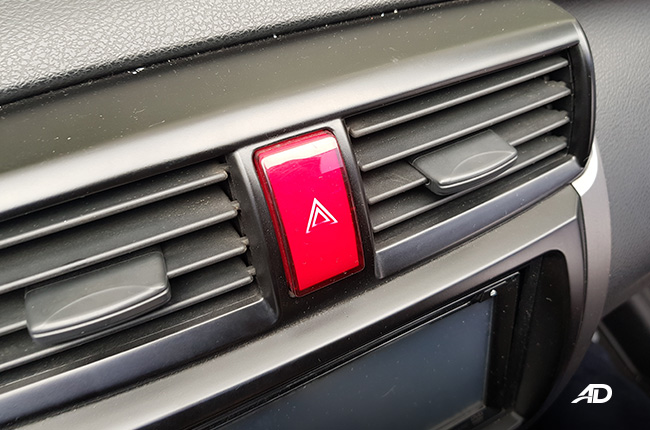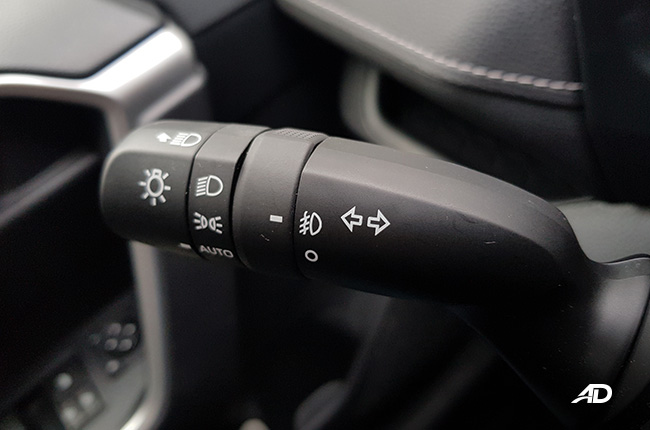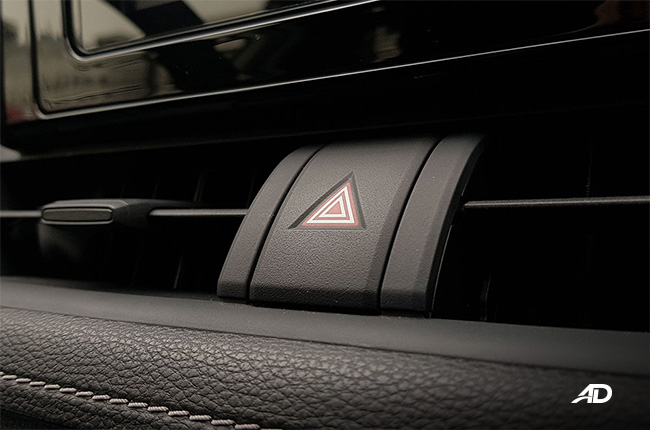
People can make all the arguments they want about hazard lights in the rain. The same old song has always been sung, “It improves visibility;” “It lets others around me know I am there;” “I cannot see, and I am going slow, so I’m letting others know;" “I am letting others know about low visibility."

Now, if you want to keep your hazard lights on in the rain, by all means flicker away, but don’t expect any kindness, on the road or online. There is one exception to the rule, and it only applies if there is an obstruction and you’re warning other drivers around you. As long as you come to a complete stop, turning on your hazards in a downpour is acceptable, but do so only if absolutely necessary. If you’re turning your hazards on simply because it’s raining or warning others that it is raining, then you have to realize that other drivers will notice the rain first before noticing your hazard lights. So, unless you see that there is a flood on the road or maybe a fallen tree, then turn off those hazard lights. Also, if you cannot see even with your wipers at full speed, then maybe it is time to change them out for new ones.
As stated in Article 8, section 3 of the Vienna Convention on Road Traffic, it is ideal for a driver to possess the necessary physical and mental ability to pilot a motor vehicle. This means that other drivers are human beings capable of rational thought and action – ideally.
Minimum requirements

Manufacturers are required to have lights on their cars. These lights vary in purpose depending on their location, intensity, angle, and color. Most cars – that have properly maintained lighting systems – are already capable of being seen in inclement weather. This is because of the regulations set by the United Nations (UN) and the Federal Motor Vehicle Safety Standards (FMVSS). These entities state that there are minimum requirements that manufacturers have to follow to deem a car road worthy. We’ll save you a lot of reading and say that these minimum requirements cover the function and the visibility of an automobile’s lighting system.
In other words, as long as your position lights, headlights, turn signals, and brake lights work, you’ll just be causing confusion to other drivers around you if your hazards are on. Turn them off because there are several entities that have come up with vehicle lighting standards that ensure visibility on the road, provided you are mindful enough to turn on your position lights, headlights or even fog lights in situations that involve fog or heavy rain.
The Vienna convention also states that hazard warning signals may only be used to warn other road users of a particular danger we’ll quote it here.
Hazard warning signal may be used only to warn other road-users of a particular danger: (a) When a vehicle which has broken down or has been involved in an accident cannot be moved immediately, so that it constitutes an obstacle to other road-users; (b) When indicating to other road-users the risk of an imminent danger.
We understand that this text may be a little dated, but this was 1968, where cars had significantly worse lighting. With how good automotive lighting has become in recent years, you can trust that your vehicle will be visible in the rain because of higher outputs and efficiency.
Turn Signals

Enabling your hazard lights will mean that you will forego a very important, and underutilized function of your lighting system: your turn indicators.
Driver’s ed 101: if you’re turning at an intersection, or changing lanes, indicate left or right. It is a common courtesy that many drivers in the Philippines fail to comply with. Indicate to safely let others around you know that you are making a move. Indicate to request access because muscling your way into another car’s lane is just asking for trouble. Be considerate and signal.
Flashing your hazard lights means that your indicators will not work because both of them are already flashing. Two flashing amber lights will only mean one thing, you are a hazard on the road with no way of indicating which direction you’re going to go.
Glare

If you have ever seen a vehicle’s rear fog light, you know that those auxiliary lights can get pretty darn bright. In inclement weather, these systems are meant to increase an automobile’s presence.
If anyone has ever flashed their lights at you, head-on or through your rear-view, know that having a set of flashing orange indicators in your line of sight can get quite annoying; maybe not as annoying and vague as blinking brake lights. There is such a thing as being too visible, and in a downpour, the last thing you want is someone to rear end you because they were blinded by the glare coming from your hazards.
In summation

If you are still insistent on the use of your hazard lights in the rain, we recommend that you look at other cars around you during a storm. Can you see other cars around you because they turned their lights on? If yes, then don’t use your hazards. Are other people using their hazards on the road? If yes, then don’t follow in their footsteps. Are you of sound mind and body to drive your automobile? If yes, then don’t use your hazards. Do you believe that Philippine drivers are capable of carrying the responsibility of vehicle and license ownership? If yes, then don’t use your hazards. Do you think that Filipino drivers are competent? If yes, then don’t use your hazards; if no, be competent and don’t use your hazards.
All quips and jests aside, this is a huge don’t. It creates confusion in an already heart pounding situation. We reiterate – only have it on when it is absolutely necessary, but if you’re continuing along just fine, then leave them off. Use proper judgement and take precautions when it comes to the rain. Stay safe above all else, but don't put others in danger.
Latest Features
-
The 6 things every Ford Ranger must pass before it leaves the factory / Featured Article
Every Ford Ranger, from the base model to the Ranger Raptor, goes through a full inspection process before it leaves the factory. This includes six steps that make sure it’s ready to drive a...
-
Which GAC AION EV is best for your everyday lifestyle? / Featured Article
The GAC AION lineup has something for everyone, maybe you're after space, speed, or just a smooth city drive. Here's a quick breakdown of which model might work best for your day-to-day life...
-
The AutoDeal Awards 2024: Celebrating excellence in the auto Industry / Featured Article
The AutoDeal Awards 2024: Celebrating excellence in the auto Industry
Popular Articles
-
Cheapest cars under P700,000 in the Philippines
Jerome Tresvalles · Sep 02, 2024
-
First car or next car, the Ford EcoSport is a tough package to beat
Jun 18, 2021
-
Car Maintenance checklist and guide – here’s everything you need to know
Earl Lee · Jan 12, 2021
-
Most fuel efficient family cars in the Philippines
Bryan Aaron Rivera · Nov 27, 2020
-
2021 Geely Okavango — Everything you need to know
Joey Deriquito · Nov 19, 2020
-
Family cars in the Philippines with the biggest trunks
Sep 20, 2023
-
Head to head: Toyota Rush vs. Suzuki XL7
Joey Deriquito · Oct 28, 2020
-
Why oil changes are important for your car
Earl Lee · Nov 10, 2020
-
2021 Kia Stonic — What you need to know about it
Joey Deriquito · Oct 16, 2020
-
Top 7 tips for buying a used car in the Philippines
Joey Deriquito · Nov 26, 2020




